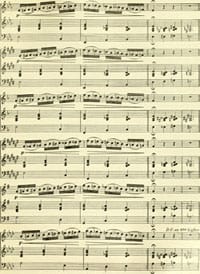Beatboxing is a form of vocal percussion, in which one imitates a drum machine primarily with the help of mouth, lips, tongue and voice. Techniques similar to beatboxing have been present in many American music genres since the 19th century.
Over the millennia, language developed and singers began to tell musical stories with words, first with instrumental accompaniment or a capella. Although the techniques used in beatboxing today are not directly related to the cultural tradition that has become known as “beatboxing,” many well-known performers have used vocal percussion in the past. Other influences can be that the performers use their bodies (e.g. clap, stomp and make noises through loud inhalation and exhalation) as percussion instruments, just like the technique used in beatboxing today.
The general consensus is that the first organized use of the voice was singing as part of religious ceremonies and rituals, and over time singing became a form of entertainment. Folk music was transmitted informally and orally by the people of the region, but over the centuries a more formal process developed in which texts, music and songs were written and published.
Musicologists call these non-lexical vocabulary, and many songs are written with such lyrics. These are often seen in the form of texts, such as the lyrics of the song “The Song of John the Baptist” or the words “I am a Christian.”
Scat singing is also similar to lilt singing, a type of vocal music in which nonsensical syllables are used to sing non-vocal dance styles. It is a vocal jazz that allows the singer to not only sing an improvised melody and an improvised rhythm, but also to create a variety of sounds with his voice, such as drums, bass, guitar, piano or other instruments.
Scat singing can give jazz singers the same improvisation possibilities as jazz instrumentalists. Scatting can be improvised rhythmically and harmoniously without the need to destroy lyrics. In addition to communicating linguistic content, scat music (such as instrumental music) can also be self-referential (d’oees) to refer to something external or to oneself.
George Gershwin was inspired by Louis Armstrong and Cab Calloway to incorporate a scat in Porgy and Bess, and Ella Fitzgerald recorded her first solo performance of “The Boswell Sisters” in three-part harmony. Scat singing quickly prevails in the jazz scene and the lyrics to jazz songs are also written. In the early 1960s Ellas Fiztgerald proved her mastery of vocal improvisation with the Bos instrument Sisters, who exuded three-part harmonies on their debut album “Ella Fitzgerald.”
Wordless vocal improvisation is alive and never fell out of favour in jazz clubs. The music of the hair salon, which is completely a cappella, is discovered by using the mouth and tongue as an instrument, breathing sharply. In jazz, scat singers are able to overlay music with their sounds and syllables that turn out to be unrecognized words.
It was mainly heard in hip-hop, which made it popular, but it has also spread to other genres, such as pop, rock, pop – rock and even rap.
Lewis describes beat rhymes as “rape, singing and performing the spoken word while simultaneously beatboxing.” It is a style of music coined by the late, great and legendary beatboxer Dr John Lewis. He has lined up artists like other beatboxers whose shit whistles he whistled, as well as his own.
Other artists taking part in the programme include cross-beatboxers and scat singers, as well as musicians and musicians from around the world. Beatboxing is also incorporated into a variety of other forms of music, including rap, hip-hop, jazz, blues and even rock “n” roll.
Although this use is not directly related to the cultural tradition that has become known as beatboxing, many well-known performers have used vocal percussion. The German actor is best known for his role as Auric Goldfinger, who plays Colonel Manfred von Holstein, who sings on horned percussion instruments at the same time, as well as on a variety of other musical instruments such as the piano, guitar, saxophone and even the Flying Spaghetti Monster. The group’s lead singer, Syd Barrett, whose vocals and drums he has played in a number of films and television shows in recent years, notably in the film version of George Orwell’s 1984, is also there.
In classical music in South India, Konnakol is a percussive speaking (solkattu) rhythmic form, and in contemporary pop music it is an element of hip-hop culture. The human voice has long been used in many cultures to create percussion effects, including the Middle East, Africa, South Asia, Latin America, Europe and the United States.
The human voice has long been used in many cultures to create percussion effects, including the Middle East, Africa, South Asia, Latin America, Europe and the United States. For example, it is not known whether beatboxers produce sounds that are already used in human languages.
My passion for singing sparked when I played a small part in my high school play. Although I was terrible at it, there was a sense of liberation that washed over me.
Ever since that moment I have been practicing on perfecting my skill and I’m lucky enough to build a career out of it! I have sung on several movie sound tracks, contracted choirs for films, and has been teaching voice and piano in the Atlanta area for over 10 years.
I want to help people understand the fundamentals of singing, how to prepare the voice and keep it strong for performances, how to juggle singing with a jam-packed schedule, and the need to operate on a budget.

